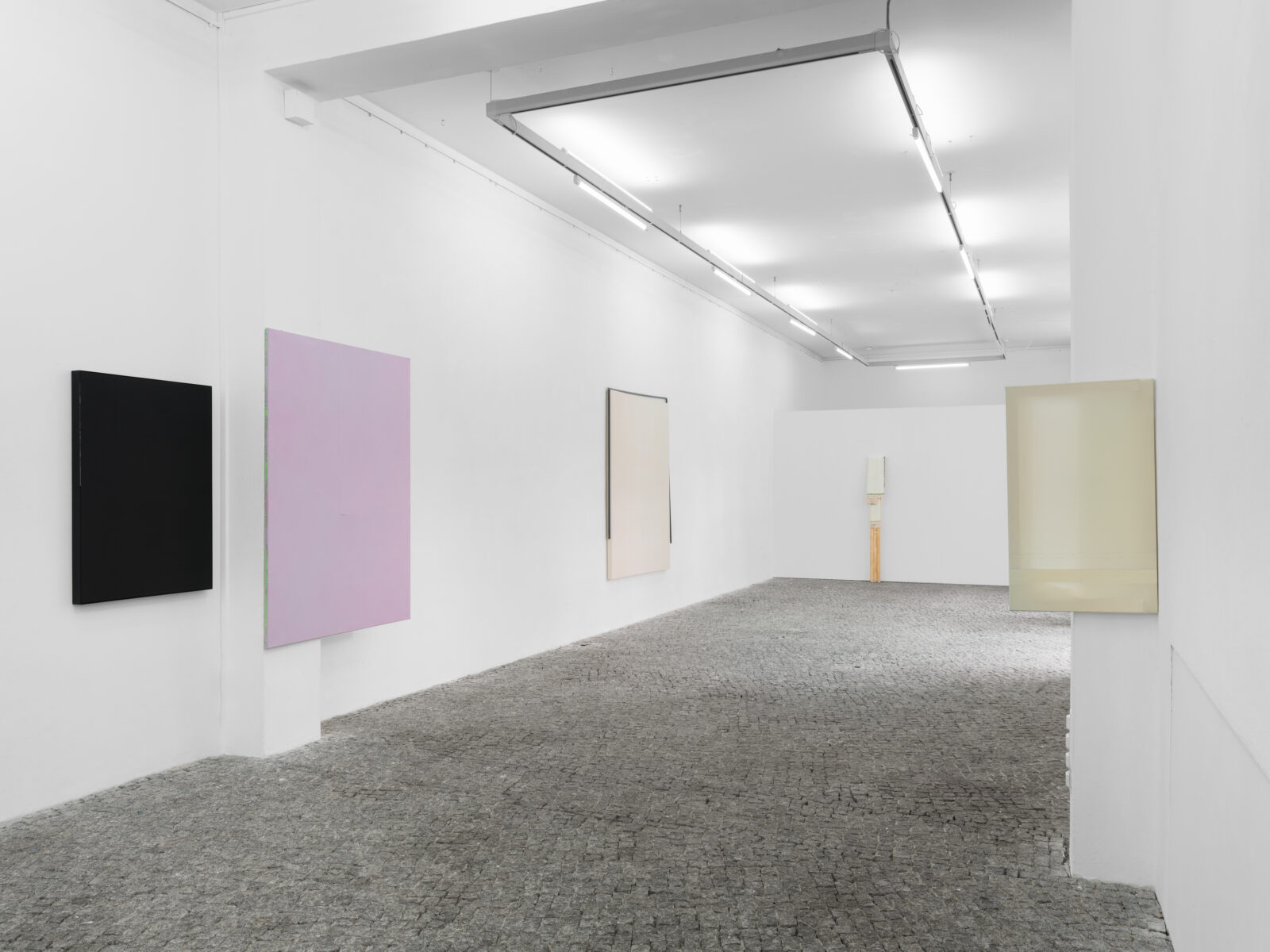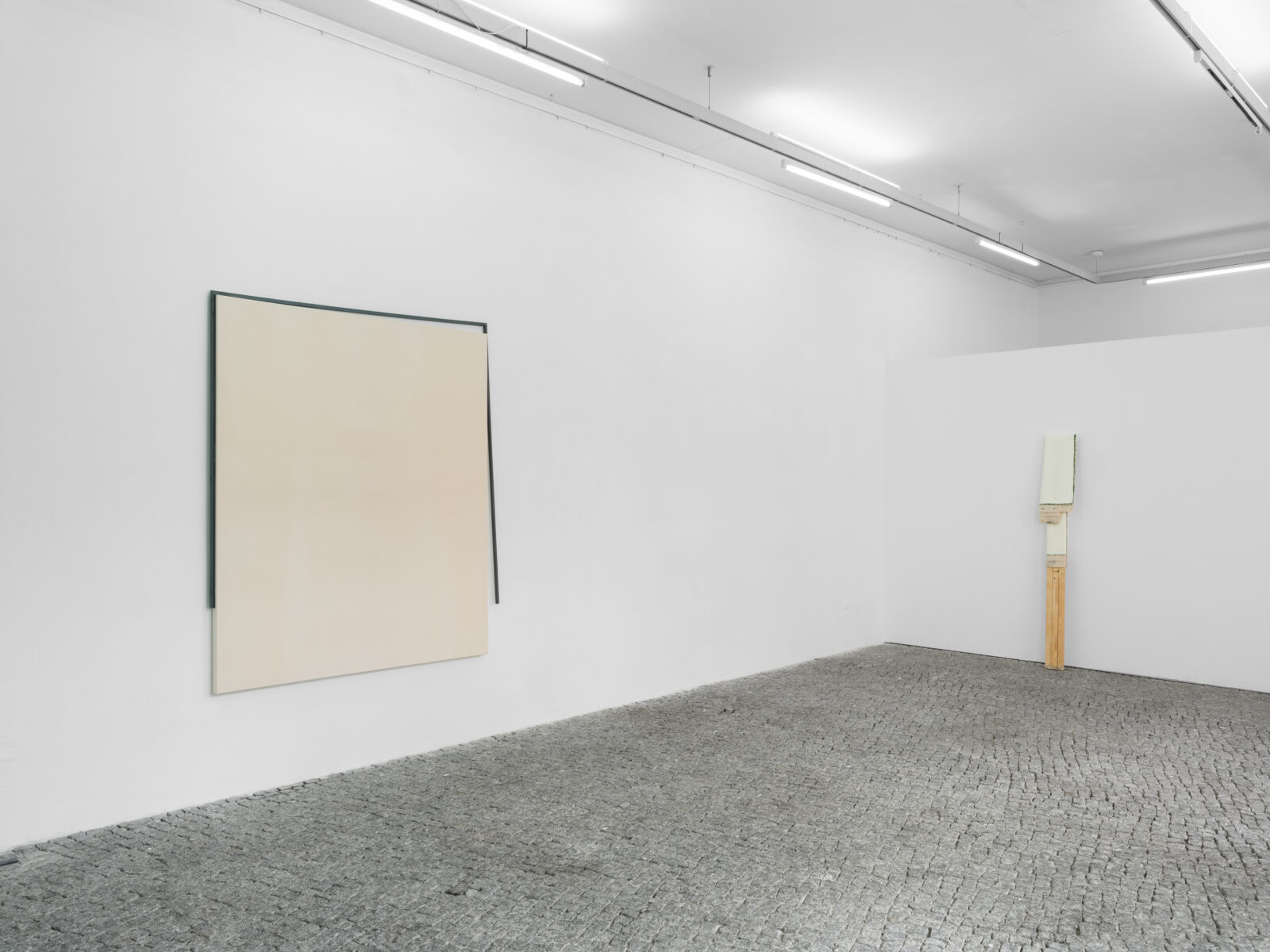Franziska Reinbothe & Laura Sachs
Unfolding a line
May 19th to June 10th 2023
Unfolding a line
Franziska Reinbothe
Laura Sachs
curated by katharina balgavy
19 May – 10 June 2023
Opening:
Friday 19th May, 6–10pm
Artist Talk:
Friday 9th June, 6pm
Talk with artists, curator and Yvonne Scheja [KubaParis, Pajo One]
Finissage:
Friday 9th June, until 9pm
Opening hours:
Thursday – Saturday 3pm–7pm or By appointment
Dear Bad Readers
This is for you. It is for you who plot the line, re-using several points, markers, and dots, shifting into straight, inconsistent, and twisted lines. The line graph comprises of two axes known as x axis and y axis. The horizontal axis is known as the x-axis; accumulating, magnetizing, liquidating, and fabricating, coding and decoding modules, functions, configuration and dis-belief. The vertical axis is known as the y-axis; declining, rising, melting and freezing, breaking, dipping and crashing through a void of molecules, clouds, the man-made anchors and satellites. The line graph is a type of chart used to define information that changes, folds, and unfolds over time. It might take a z-axis; twirling, radiating its variable dependents through the clusters, grids, and dust. By unfolding, we deconstruct a paragraph, a history; we re-write and sculpt a story. With drawing a line, we exceed paint, steel and wood, birthing its infinite lyricism of universal choirs, we are hammering ourselves into the compulsion, expanding its three-dimensional shift, the order of things; the algebra of matter. Lifting the metrics, the taxonomy and classification of things, we dissolve from the rattling, the noise and its consequential stillness. Loose threads intertwine in order to become a yarn of matter and rupture; breaking, bending, ripping things apart and binding them together. The incompleteness endures and exceeds the maintenance, the known languages suffer the broken vocabularies; that is how the broken line becomes ionized, re-organized, a proton, a DNA string, a stroke of paint, an arbitrarily splitted atom, a texture of material. It will threaten, and it will comfort you, it might break you, it might disguise and it might haunt you, it bewilders; it should be both soft and hard. Double the line; it becomes equal. Triple the line; indicating equivalence of two different things but all three must be present. Multiply; humming a chord, it is forming a frequency.
Franziska Reinbothe
In Franziska Reinbothe’s raumspezifischen Arbeiten wird das Bild zum skulpturalen Objekt. Franziska Reinbothe verarbeitet, bespannt und vernäht, bricht, faltet, biegt und dekonstruiert Leinwände mit bemalten Stoffen wie Chiffon auf meist doppelten Keilrahmen. Die in der herkömmlichen Malerei häufig vernachlässigten Ränder und Rückseite des Rahmens, sowie das Material der Bespannung tritt als gleichwertiges Bildelement in den Vordergrund. Mit jener Verschiebung, den Brüchen und dem Umbruch, suggeriert Franziska Reinbothe diskursive Formen mit neuem Blick auf die junge, erweiterte Malerei. Durch dieses radikale Vorgehen entstehen Objekte mit Holz, durchlässigen und plastischen Stoffen mit einheitlicher Farbe und akzentuierten Flächen, die den Blick des Betrachters durch die Radikalität und der Suggestion ihrer künstlerischen Praxis fordern. In Franziska Reinbothe’s space-specific works, the painting becomes the sculptural object. Franziska Reinbothe rips, folds, breaks, stretches and sews, bends and deconstructs her works with wood and painted fabrics on large scaled stretcher frames. Re-framing her components and materials, Reinbothe deconstructs the cover and multiplication of strong and soft fabrics such as chiffon on the canvas, such as the form of the frames of the painting suggest and appear as an equal pictorial element which are often neglected in conventional painting methodologies. It is precisely this radical procedure that gives rise to a discourse of her
objects that refer to a new reality of its distorted form, material, and colour, in which the gaze of the viewer is
challenged by her current painting practice.
Laura Sachs
Laura Sachs bewegt sich in ihrem Werk im erweiterten malerischen Raum und dekonstruiert die Grenzen
des Minimalismus, indem gemalte Kompositionen zu Objekten kontextualisiert und dessen Formenspiel und
Prozesshaftigkeit experimentell verarbeitet werden. Mit konstruierten Eingriffen und Setzungen reagiert die
Künstlerin auf Veränderungen in ihren Arbeitsprozessen mit Materialien wie Stahl, Metall, Holz, Baumwolle,
Papier, Staub und Ölfarben. Die Haltbarkeit wird überprüft, versetzt, austariert und formiert. In dieser
Prozesshaftigkeit zwischen Kontrolle und flüchtigem Zufall entstehen innerhalb Laura Sachs’ Malereien
Verbindungen und Dialoge, die schliesslich zu klaren Formulierungen und ausgewogenen Kompositionen
führen. Laura Sachs‘ Arbeiten erweisen sich bei näherer Betrachtung als präzisiert gemalt, konstruierte und
zugleich zufällig entstandene Unikate, welche die Prozesse, strukturalistische Denk- und Materialstudien der
Künstlerin suggerieren.
Laura Sachs’ works expand the painterly space and deconstruct the limits of minimalism by contextualizing
her painted compositions into objects, and experimentally embedding its forms and processuality in her
working process. With constructed interventions and adjustments, the artist reacts to adaptions in her work
with materials such as steel, metal, wood, cotton, paper, dust and oil. The durability of her works are
validated, adjusted, and formed. In this processuality between control and fleeting coincidence, connections
and dialogues arise within Laura Sachs’ paintings, which ultimately lead to clear formulations and balanced
compositions. On closer inspection, Laura Sachs’ works turn out to be both precisely painted and
coincidentally constructed, unique pieces that suggest the artist’s process, structuralist and material studies.
Franziska Reinbothe
Franziska Reinbothe (*1980 in Berlin) studierte Medienkunst, später Malerei bei Ingo Meller an der
Hochschule für Grafik und Buchkunst Leipzig. Franziska Reinbothe hielt Gruppen- und
Einzelausstellungen u.A. in den Deichtorhallen Hamburg, Kunsthalle Rostock, Kunsthalle Hamburg,
Kunstraum Kreuzberg/Bethanien und Galerie Mathias Güntner. Franziska Reinbothe lebt und arbeitet
in Leipzig und Berlin.
Franziska Reinbothe (b. 1980 in Berlin) studied media art, then painting with Ingo Meller at the
Academy of Fine Arts Leipzig. Franziska Reinbothe held group and solo exhibitions at Deichtorhallen
Hamburg, Kunsthalle Rostock, Kunsthalle Hamburg, Kunstraum Kreuzberg/Bethanien und Galerie
Mathias Güntner. Franziska Reinbothe lives and works in Leipzig and Berlin.
Laura Sachs
Laura Sachs (*1985 in Darmstadt) studierte zunächst Philosophie und Kunst an der Goethe-
Universität in Frankfurt am Main, sowie Malerei und Bildhauerei an der Kunstakademie Düsseldorf
bei Hubert Kiecol und Gregor Schneider. Laura Sachs hielt Gruppen- und Einzelausstellungen u.A.
im Museum Kunstpalast Düsseldorf, Salon der Gegenwart Hamburg, Setareh und She BAM! Galerie
Laetitia Gorsy. Laura Sachs lebt und arbeitet in Berlin.
Laura Sachs (b. 1985 in Darmstadt) studied Philosophy and Art at the Goethe-University in Frankfurt,
later studied painting and sculpture at the Art Academy Düsseldorf with Hubert Kiecol and Gregor
Schneider. Laura Sachs held group and solo exhibitions at Museum Kunstpalast Düsseldorf, Salon
der Gegenwart Hamburg, Setareh and She BAM! Galerie Laetitia Gorsy among others. Laura Sachs
lives and works in Berlin.
Katharina Balgavy
Katharina Balgavy (*1985 in Wien) studierte an der Akademie der bildenden Künste Wien, Bildende Kunst,
Kulturwissenschaften und Critical Studies. Sie arbeitet als Kuratorin und Head of Collection in Berlin und
Düsseldorf.
Katharina Balgavy (b.1985 in Vienna) studied Fine arts, Cultural studies and Critical studies at the Academy
of Fine Arts Vienna. She works as Curator and Head of Collection in Berlin and Düsseldorf.





